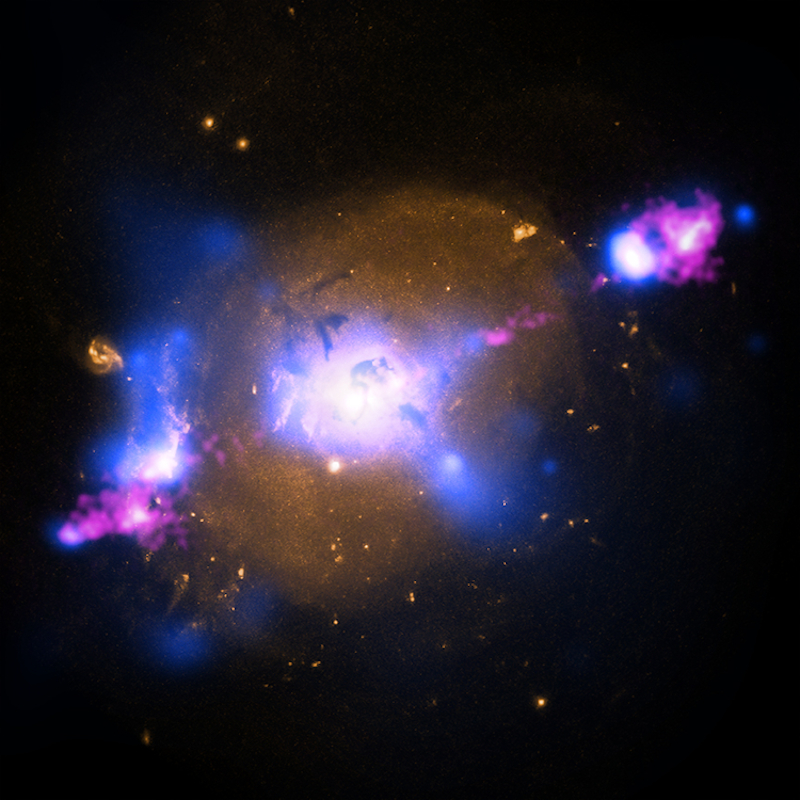
 Credit: X-ray: NASA/CXC/SAO/A.Siemiginowska et al; Optical: NASA/STScI; Radio: NSF/NRAO/VLA
Credit: X-ray: NASA/CXC/SAO/A.Siemiginowska et al; Optical: NASA/STScI; Radio: NSF/NRAO/VLA
Jet Engine
Galaxies that contain supermassive black holes (and we think most galaxies do contain such beasts) are in a precarious position. Sometimes, like the case of Sgr A*, the supermassive black hole in our own Milky Way, the supermassive black hole is relatively quiet, lurking in darkness. In others, the SMBH produces large outpourings of energy, often dominated by narrow, destructive particle beams blasting through the galaxy for thousands of light-years. Even though these black holes are supermassive, they are tiny compared to the size of the host galaxy, with event horizons about only the size of our own solar system (about 1 trillionth the size of the galaxy). Nevertheless these tiny regions of space can pack a tremendous punch. The image above shows a composite false-color X-ray, optical and radio image of an elliptical galaxy called 4C+29.30 which contains a supermassive black hole at its center, firing a particle beam through the galaxy. The X-ray image from the Chandra X-ray Observatory is shown in blue, the radio image in purple, and the optical image in gold. The radio-emitting particle beam emanates from the central black hole and stretches on either side, just beyond the apparent boundary of the optical galaxy. The X-ray emission shows how this particle beam collides with and heats gas within the galaxy to millions of degrees. In order to understand how galaxies like this form and evolve, it's important to understand how supermassive black holes, and the energy they emit, interact with their environments. These interactions can help seed the space between galaxies with chemically-enriched material, suppress star formation or even trigger the birth of new stars.
Published: June 1, 2020
<
HEA Dictionary ● Archive
● Search HEAPOW
● Other Languages
● HEAPOW on Facebook
● Download all Images
● Education ● HEAD
>

Each week the HEASARC
brings you new, exciting and beautiful images from X-ray and Gamma ray
astronomy. Check back each week and be sure to check out the HEAPOW archive!
Page Author: Dr. Michael F. Corcoran
Last modified Monday, 26-Feb-2024 17:09:42 EST


